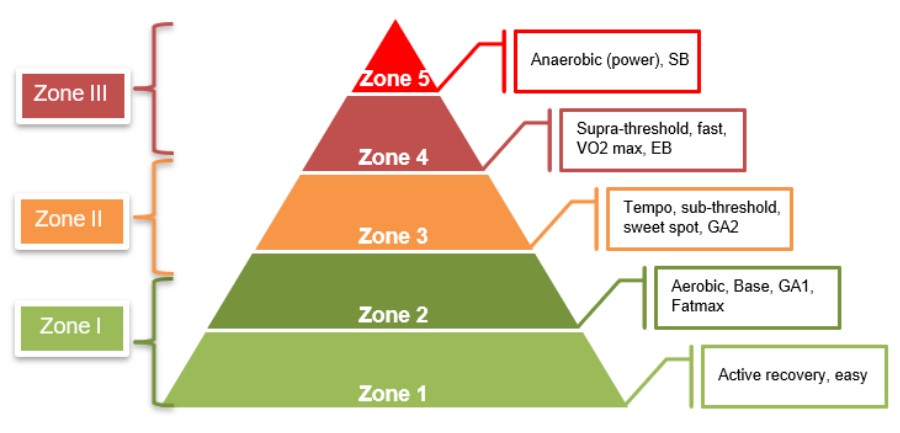Training intensities and training zones are not the same thing. You probably already understood that training zones are a range, while training intensities pinpoint a specific intensity. But there’s more to it.
In the previous articles we talked about the benefits of using training zones. However, when you want to achieve very specific training adaptations, training zones can be too generic. Let’s use the 3 zone training model – used in the Norwegian Training Method – as an example.

Here are 3 reasons why you sometimes need to aim for training intensities instead of training zones.
1. The training zone range is too large
The most obvious reason why training zones are too generic is because their range is too large. Zone 3 for instance includes all intensities above LT2/anaerobic threshold. That means it ranges from intensities slightly above LT2, which you can maintain for dozens of minutes, and all-out efforts lasting less than a couple of seconds.
It goes without saying that the training adaptation differs between these two extremes. So when prescribing a training, it sometimes requires you to be a bit more specific, and define the intensity in more detail than just a training zone.
2. You aim for an intensity that separates 2 zones
What if you want to train your athlete at an intensity that actually separates two zones? For example, one of the main forms of Norwegian training methodology is based on intervals at the LT2/anaerobic threshold. You cannot describe this training in zones, as it cannot be assigned to either zone 2 or zone 3. Here you need an intensity that precisely defines the boundary between the two zones.
3. Your goal is based on a different parameter
Imagine you want to train at an intensity at which you burn the most fat (FatMax). You’re now wondering whether this takes place in zone 1 or zone 2. So you perform an exercise test to find out what your FatMax intensity is.
Now that you know your FatMax training intensity, why worry about whether this lives in zone 1 or zone 2? Instead, just use the FatMax training intensity itself or create a FatMax training zone.
In other words, if you have a specific training goal in mind, focus on the right metric.
Here are three other examples:
- When creating VO2max intervals, base the intensity on a percentage of VO2max, not just zone 3.
- When creating anaerobic intervals, base the intensity on anaerobic energy
contribution. - When creating an endurance training while knowing there’s a high intensity training the day after, base the endurance intensity on a carbohydrate combustion rate that you can fuel for (e.g. power or speed at which you burn 60 grams of carbs per hour).
Learn more about these highly individual training zones via this link.
Summary
Training zones can be very helpful. They enable you to create a workout without
overcomplicating things. However, if you want to achieve specific training adaptations, you sometimes need specific training intensities instead of generic training zones.